Power Pitch
Basic to Clinical Neuroscience in Pediatrics
ISMRM & ISMRT Annual Meeting & Exhibition • 10-15 May 2025 • Honolulu, Hawai'i

| 08:15 |
 |
Screen Number: 26
0845. Preclinical
1H MRS Study of a Porcine Model Shows Evidence and Mechanisms
for Neuronal Injury in Neonatal Cardiopulmonary Bypass Surgery

A. Omon, D. Spielman, M. Gu, R. Hurd, K. Riemer, F.
Hanley
Stanford University School of Medicine, Stanford, United States
Impact: Understanding how different surgical approaches
affect patient outcomes will enable clinics to implement
safer protocols for neonates with congenital heart disease,
who face a greater risk of neurodevelopmental delays from
these critical procedures.
|
| 08:17 |
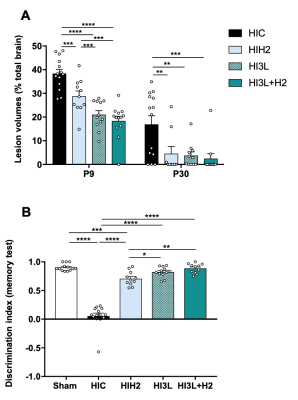 |
Screen Number: 27
0846. Lactate
and Hypothermia: A Dual Approach for Neuroprotection in Neonatal
Hypoxia-Ischemia
A-K BOUZIER-SORE, I. Omar, H. ROUMES, C. PERROT, P.
GOUDENECHE, J-F CHATEIL, M-C BEAUVIEUX, O. TANDONNET, L.
PELLERIN
CRMSB, Bordeaux, France
Impact: Lactate administration showed neuroprotection in
NHI. Our retrospective clinical evaluation tracking blood
parameters during sodium L-lactate infusion in preterm
infants confirmed the safety of lactate administration, even
with elevated lactatemia at birth, indicating promising
potential for clinical pediatric applications.
|
| 08:19 |
 |
Screen Number: 28
0847. Multi-parametric
MRI assessment of white matter injury in premature neonatal rats
W. XiaoLi, W. Xizhen, G. Xiaotian, L. Zhen, Z. HaiMo, Z.
XiaoZu, C. YongJun, P. Wu
Medical Imaging Center, Affiliated Hospital of Shandong Second Medical University, Weifang, China
Impact: After PWMI in neonatal rats, cerebral blood flow
and blood oxygen levels are low, disrupting the
intracerebral microenvironment. This inhibits the
proliferation and differentiation of cerebral OPCs in PWMI
rats, leading to cerebral white matter injury.
|
| 08:21 |
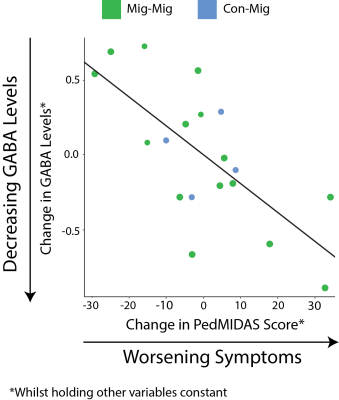 |
Screen Number: 29
0848. GABA
and glutamate changes over time in children with migraine
T. Bell, L. Cho, J. Kuziek, K. Millar, M. Stokoe, A.
Hershey, S. Orr, A. Harris
University of Calgary, Calgary, Canada
Impact: This longitudinal study demonstrates a role for
changes in thalamic GABA levels over time in migraine burden
in adolescents, providing new evidence for a role of GABA in
migraine onset and progression, and a potential opportunity
for new treatment targets.
|
| 08:23 |
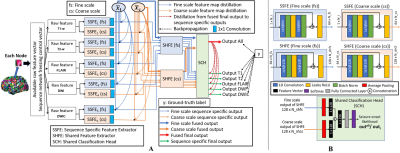 |
Screen Number: 30
0849. Novel
MRI sequence-agnostic deep learning model to localize seizure
onset zone in pediatric drug-resistance epilepsy
J-W Jeong, S. Banerjee, M-H Lee, M. Dong, E. Asano, C.
Juhasz
Wayne State University, Detroit, United States
Impact: Sequence-agnostic learning approach could
accurately classify seizure onset zone (SOZ) using clinical
MRI sequence data of pediatric drug-resistant epilepsy. It
provided a new way to better generalize the SOZ
classification in multi-center studies that suffer from
missing sequence data problem
|
| 08:25 |
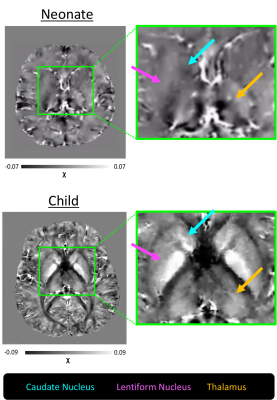 |
Screen Number: 31
0850. Ultra-high
field quantitative susceptibility mapping of the neonatal brain
C. Casella, K. Vecchiato, A. S. Dokumaci, P. Bridgen, P. Di
Ciò, I. Tomazinho, C. Da Costa, D. Gallo, J. Willers Moore,
J. Hajnal, D. Edwards, J. Sedlacik, K. Shmueli, T.
Wilkinson, R. Tomi-Tricot, D. Carmichael, J.
O’Muircheartaigh, S. Malik, T. Arichi
King's College London, London, United Kingdom
Impact: 7T QSM is feasible and sensitive to iron
deposition in the neonatal brain, offering potential for
early detection of iron-related developmental markers. This
approach may improve understanding of prematurity’s effects
on brain iron and future neurodevelopment.
|
| 08:27 |
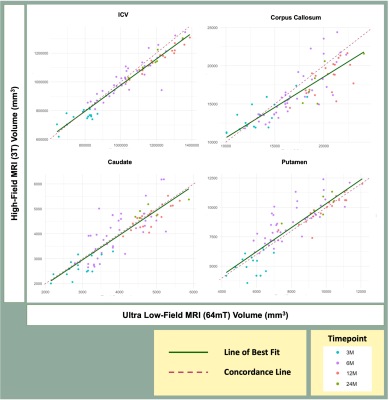 |
Screen Number: 32
0851. Feasibility
of Ultra- Low-Field MRI for Measurement of Regional Infant Brain
Volumes in Structures Associated with Anaemia
J. Ringshaw, N. Bourke, M. Zieff, C. Wedderburn, C. Casella,
L. Bradford, S. Williams, D. Herr, M. Miles, J.
O’Muircheartaigh, C. Bennallick, D. Stein, D. Alexander, D.
Jones, S. Williams, K. Donald
University of Cape Town, Cape Town, South Africa
Impact: This study demonstrates high comparability
between ultra- low-field (64mT) and high-field (3T) volumes
for brain regions implicated in antenatal maternal anaemia.
Findings validate the use of the Hyperfine scanner for
paediatric neuroimaging work on anaemia across low- and
middle-income countries.
|
| 08:29 |
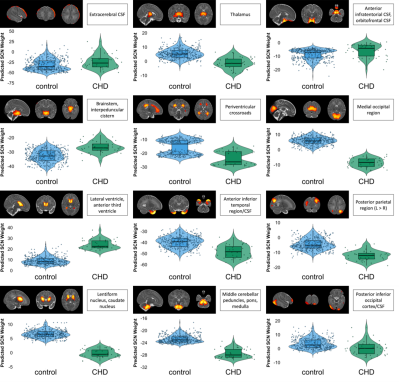 |
Screen Number: 33
0852. Structural
Covariance Network Analysis Reveals Altered Brain Development in
Neonates with Congenital Heart Disease After Surgery
M. van der Meijden, B. Gal-Er, D. Cromb, S. Wilson, A. Chew,
A. Egloff, K. Pushparajah, J. Simpson, J. Hajnal, A. D.
Edwards, M. Rutherford, J. O’Muircheartaigh, A. Bonthrone,
S. Counsell
King's College London, London, United Kingdom
Impact: Structural covariance network analysis, a
data-driven approach to characterise networks of
simultaneously developing brain regions, identified 12
networks that were significantly different in neonates with
CHD after cardiac surgery compared to healthy neonates,
highlighting altered brain development in this population.
|
| 08:31 |
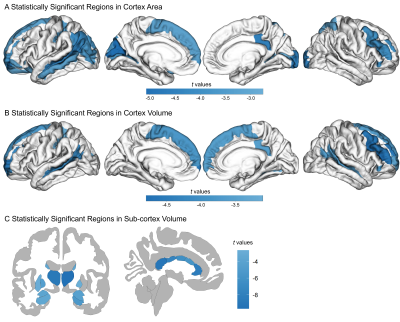 |
Screen Number: 34
0853. Multivariate
Pattern Analysis Reveals Neurobiological Markers of
Communication Impairments in Children with Bilateral Spastic
Cerebral Palsy
H. Jie, H. Cheng, L. Xianjun, N. Lisha, P. Ying, J.
Haoxiang, L. Heng, Z. Tijiang
Department of Radiology, Affiliated Hospital of Zunyi Medical University, Medical Imaging Center of Guizhou Province, Engineering Research Center of Intelligent Medical Imaging in Guizhou Higher Education Institutions, Zunyi, China
Impact: The MVPA-based model facilitates individualized
diagnostics for communication impairments in BSCP,
supporting personalized treatment and rehabilitation, and
paving the way for precision neuroimaging applications in
pediatric neurodevelopmental disorders.
|
| 08:33 |
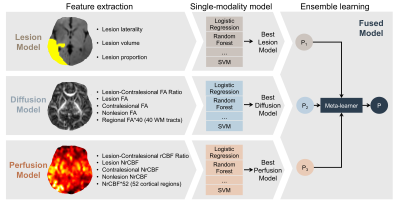 |
Screen Number: 35
0854. Added
value of perfusion MRI in neonatal arterial ischemic stroke for
delineation of biomarker and prediction of remote seizure
W. Wu, S. Agarwal, R. Ichord, H. Huang, M. Ouyang
Children's Hospital of Philadelphia, Philadelphia, United States
Impact: This study enhances understanding of NAIS by
revealing unique perfusion characteristics and developing a
predictive model for remote seizure after NAIS. It supports
personalized interventions, potentially improving long-term
outcomes and guiding future research on NAIS management and
outcomes.
|
| 08:35 |
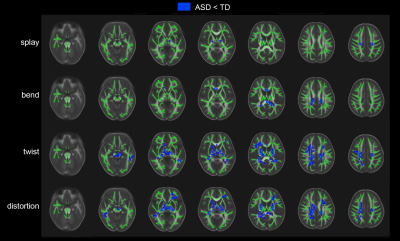 |
Screen Number: 36
0855. Microstructural
geometric alterations in autism: relation with brain network and
adaptive function
M. Wang, H. Zhu, D. Xu, B. Peng, Y. Dai, J. Cheng, H. Jiang
Department of Radiology, Affiliated Children's Hospital of Jiangnan University, Wuxi, China
Impact: White matter microstructural geometry may
provide new insights into the neurobiological mechanisms
underlying ASD in children, and serve as biomarkers for the
prediction of ASD and adaptive function.
|
| 08:37 |
 |
Screen Number: 37
0856. Development
of Normative Pediatric Brain Myelin and Iron Atlases and
Application to Adrenoleukodystrophy (ALD)
M. Sisman, E. Mallack, A. Roberts, A. Dimov, P.
Spincemaille, T. Nguyen, Y. Wang
Cornell University, New York, United States
Impact: The creation of age- and sex-specific normative
pediatric brain atlases of negative and positive
susceptibility sources enables the study of spatiotemporal
distribution of brain myelin and iron in children under
normal neurodevelopment and in various clinical conditions.
|
| 08:39 |
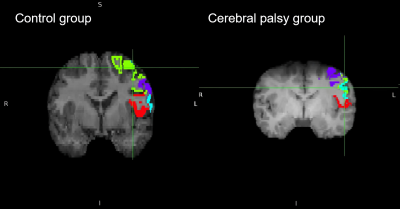 |
Screen Number: 38
0857. Individualized
Parcellation of Precentral Gyrus in Cerebral Palsy Based on
Structural Connectivity and Non-negative Matrix Factorization
Z. Wei, Y. Bian, Z. Jia, G. Wang, J. Yang, X. Li
the First Affiliated Hospital of Xi'an Jiaotong University, Xi'an, China
Impact: We further refined the segmentation results of
the precentral gyrus brain area, clarified the impact of
cerebral palsy on each subregion, provided new ideas for TMS
target optimization, and helped to improve the efficacy of
motor rehabilitation in CP children.
|
| 08:41 |
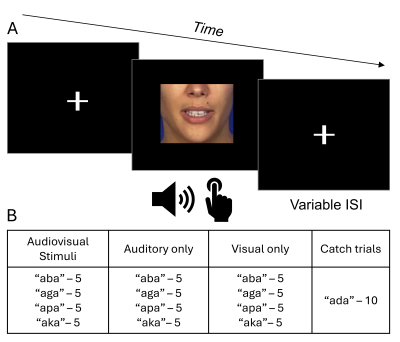 |
Screen Number: 39
0858. Audiovisual
speech integration in children born preterm: a behavioral and
fMRI study
M. Durand-Ruel, M. Cascioli, P. Hüppi
UNIGE, Geneva, Switzerland
Impact: This study uses a new protocol to investigate
audiovisual speech integration in a vulnerable population
using functional magnetic resonance imaging. This is the
first study using fMRI in preterm children to investigate
this question.
|
| 08:43 |
 |
Screen Number: 40
0859. Metabolic
Insights and Diagnostic Potential of Multi-pool CEST MRI in
Neonatal Hypoxic-Ischemic Encephalopathy: a pilot study
X. Zhuang, Y. Wu, K. Jin, J. Li, H. Zhang
Hunan Children's Hospital, Changsha, China
Impact: Multi-pool Lorentzian fitting method offers
detailed metabolic information, potentially serving as an
indicator for HIE diagnosis, monitoring, and prognosis.
|
| 08:45 |
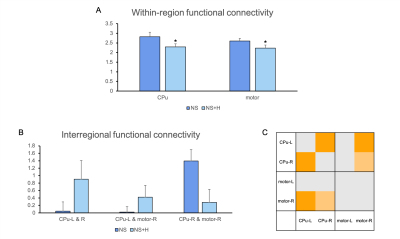 |
Screen Number: 41
0860. Functional
Connectivity Alteration in Motor Network in the Adolescent Brain
Following Neonatal Intermittent Hypoxia
Y-W Sung, C-F Lu, B-Y Hsieh, C-C Huang, Y-C Jill Kao
National Yang Ming Chiao Tung University, Taipei, Taiwan
Impact: Our findings suggest the alteration in the motor
network following neonatal intermittent hypoxia (IH) may
last during adolescence. This underscores the necessity for
longitudinal study to investigate long-term impairment
following neonatal IH, informing potential interventions for
affected individuals.
|
| 08:47 |
 |
Screen Number: 42
0861. Altered
Cortico-Cerebellar Effective Connectivity of the Visuo-Attention
System is associated with READ1 deletion in Developmental
Dyslexia

G. Korkmaz, R. Lorenzi, V. Lampis, D. Peruzzo, F.
Arrigoni, D. Pischedda, E. D’Angelo, F. Palesi, S.
Mascheretti, C. Gandini Wheeler-Kingshott
University of Pavia, Pavia, Italy
Impact:
Our approach of combining imaging with genetics demonstrates that effective connectivity between cortico-cerebellar regions involved in attention is essential for reading ability and that genetic alterations impact on the excitatory strength of such connections, providing possible targets for neuro-modulatory interventions. |
| 08:49 |
 |
Screen Number: 43
0862. Quantitative
evaluation of neurocutaneous melanosis using 3D MR
fingerprinting
M. Umehana, Y. Fushimi, M. Sakamoto, T. Yoshida, S. Okuchi,
S. Otani, A. Sakata, T. Yamamoto, S. Nakajima, S. Ikeda, S.
Ito, Y. Ma, S. Morooka, N. Morimoto, Y. Nakamoto
Kyoto University Graduate School of Medicine, Kyoto, Japan
Impact: This study introduces a quantitative MR
fingerprinting method for assessing neurocutaneous melanosis
(NCM), improving diagnostic accuracy and objectivity, and
supporting early, precise identification of melanosis, which
may enhance understanding and management of NCM.
|
| 08:51 |
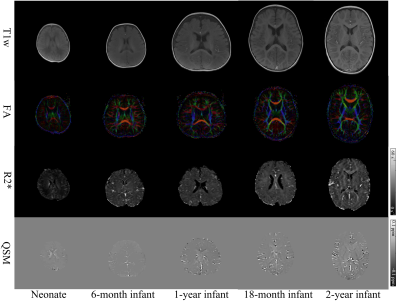 |
Screen Number: 44
0863. Enhanced
Quantitative Susceptibility Mapping of Preterm Infant Brains via
Nonlinear Total Field Inversion and Multi-parameter
Regularization
J. Cheng, Z. Xu, C. Wang, M. Xu, L. Zhu, L. Lin, Y. Zhang,
Y. Feng, J. Cheng
The First Affiliated Hospital of Zhengzhou University, Zhengzhou, China
Impact: Preliminary applications in preterm infants
indicate that proposed approach can successfully model the
essential spatiotemporal evolution of susceptibility. This
advancement holds promise for establishing a framework for
tracking brain maturation in preterm-populations, setting a
new way in early neurodevelopmental assessment.
|
| 08:53 |
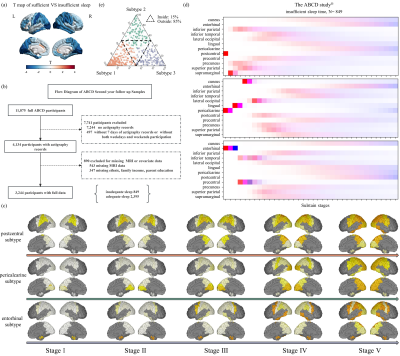 |
Screen Number: 45
0864. Neuroimaging
Subtypes in Adolescents with Insufficient Sleep Time Shows
Distinct Trajectories of Altered Cortical Thickness
Y. Chen, M. Li, H. Xu, Z. Zhao, Y. Huang, G. Wang, D. Wu
Department of Biomedical Engineering, Zhejiang University, Hangzhou, China
Impact: We identified three distinct effect patterns of
insufficient sleep on cortical thickness with unique sleep
behaviors, disease comorbidity, cognitive function, and
academic performances. These findings contribute to a
comprehensive understanding of the impact of insufficient
sleep on adolescent development.
|
| 08:55 |
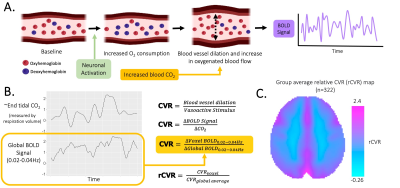 |
Screen Number: 46
0865. Sex-specific
cerebrovascular reactivity differences related to functional
connectivity in autistic children
Q. Lee, J. Lee, P. Liu, D. Harvey, C. Nordahl, A. Fan
University of California - Davis, School of Medicine, Davis, United States
Impact: Our study highlights potential differences in
cerebrovascular function in autism that could improve our
neurobiological understanding of autism-related FC changes
and inform new targets for intervention.
|
| 08:57 |
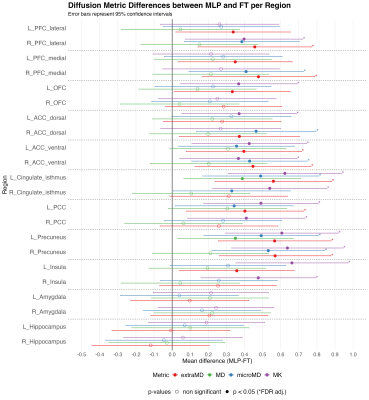 |
Screen Number: 47
0866. Structural
correlates of Executive Functions in children born
moderate-to-late preterm and full-term
J. Sa de Almeida, L. Rossetti, C. Gilchrist, R. Mainzer, P.
Hüppi, M. Seal, P. Anderson, D. Thompson, J. Cheong
University Hospitals of Geneva, Geneva, Switzerland
Impact: Regional microstructure relates to Executive
Functions outcomes, with increased cortical diffusivities
linked to poorer outcomes, while increased subcortical
diffusivities relate to better performance. Moderate-to-late
preterm birth results in increased cortical diffusivity in
EF-related regions, impacting attentional control and
cognitive flexibility.
|
| 08:59 |
 |
Screen Number: 48
0867. Alterations
of glymphatic transport in hypoxic-ischemic encephalopathy were
assessed using dynamic contrast-enhanced MRI.
j. shen, y. yang, f. chen, y. zuo, y. yang, w. wei, y. liu,
j. wen
University of Science and Technology of China, hefei, China
Impact: This study identifies impaired glymphatic
transport in neonates with HIE, leading to decreased CSF
influx and interstitial fluid stagnation. Understanding
these mechanisms may inform therapies to enhance glymphatic
clearance and improve long-term neurodevelopmental outcomes
for affected neonates.
|
| 09:01 |
 |
Screen Number: 49
0868. Longitudinal
Brain Morphometry and NIH Toolbox Performance in Adolescents
Before and After COVID-19

M. Ryan, P. Rodriguez Rivera, H. Liang, A. Isaiah, T.
Ernst, L. Chang
University of Maryland School of Medicine, Baltimore, United States
Impact: SARS-CoV-2 infected >16 million US children and
may impact their brain development. We found morphometric
abnormalities in adolescents with COVID-19, which
necessitates further evaluation of long-term effects on
brain development trajectories and possible interventions to
mitigate cognitive consequences.
|
| 09:03 |
 |
Screen Number: 50
0869. Dynamic
Shifts in Controllability of White Matter Networks in Early
Brain Development
S. Nguyen, K. Huynh, G. Lin, S. Ahmad, P-T Yap
University of North Carolina at Chapel Hill, Chapel Hill, United States
Impact: We found that as children grow, brain networks
become more controllable on average but less synchronized.
Regions with high average controllability generally have low
modal controllability, and more synchronized brain networks
usually show lower average controllability.
|
The International Society for Magnetic Resonance in Medicine is accredited by the Accreditation Council for Continuing Medical Education to provide continuing medical education for physicians.